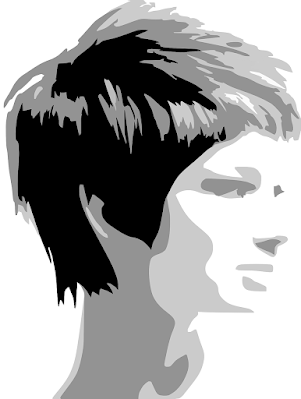Edges, Limits, and Testing Them - by Doc Nolan; Photos and AI images by Doc Nolan and Xenon Darrow
The human brain is an incredible information-processing machine, The visual cortex, located way in the back of your skull, is where inputs from your eyes are processed. The brain excels at some things (noticing movements and seeing edges) and sucks at others. Do you think you know the world the way it is? Well, mantis shrimp have 12 to 16 visual pigments compared to humanity’s three. They are the only animals known to be able to see circularly polarised light. And birds? They see ultraviolet light. Snakes? They can see infrared (like a thermal camera!) One estimate is that only one percent of all light that hits our eyes is in the “visible spectrum” between 300 and 900 nanometers.
On the other hand, consider that you notice edges very well. And motion, too. Or do you? Yes, a flickering light on the horizon catches your attention. But magicians (and artists!) know that your mind fills in gaps and is terrible at multitasking. As the magician’s right hand quickly covers a box with a fluttering cloth, what’s his left hand doing? Ah, you didn’t notice, did you? Also take a closer look at a pen-and-ink drawing of a face. The more you look, the more you realize that most of the lines hint at a face that’s not actually depicted photo-realistically on the paper. The woman is not smiling. What’s on the paper is just a curved, irregular line; you imagined the smile.
It’s not that we don’t live in the real world. We do. It’s just that much of what we think we see (with our eyes) is a creation manufactured in our minds. You can play with this; an entire industry has developed based on “optical illusions.” If you have some time, find an Escher print and copy it as closely as possible – but as you do, observe your emotional and mental states. Don’t be surprised if you feel confused and frustrated! You’re used to operating in a visual mental world that somewhat resembles your tactile world – and you’re used to perceiving imaginary things like “distance” and “depth” based on cues involving relative size and perspectives (leading lines, for example).
Those who backpack or sea kayak know that the mind is a trickster. The crisp, clearly defined mountains that seem a couple of miles away turn out to be 50 miles away. The coastline that seemed so close seems no nearer after half an hour of paddling.
If you want to create images that trick the minds of others with drawings or paintings or photos, you can! To calm the spirits of a viewer, shift the lighting a bit toward the blue end of the visible spectrum. To provoke an impression of depth, include a large tree at the edge of an image, but blur a small object of interest in the center and mute its colors.
Don’t expect people to remember the crisply defined leaves of the tree to one side. If you ask them, they usually won’t be able to tell you if it was an oak or a coconut palm. Their brains had focused on that small “what is it anyway?” in the center. Yes, a magic trick. Distraction. Focus. Manipulation!
There are some takeaways here. An old saying goes, “Don’t believe anything you hear and only half of what you see!” (If you think eyewitnesses are the gold standard, ask five people who saw the same auto accident and prepare for a shock as each describes what they believe they saw!) Beyond simple humility, look at things an artist or photographer had not meant for you to notice. Doing this has a name: meditation. As an artist and someone looking at images, you can widen and deepen your understanding by simply (trying to) block your monkey mind’s tendency to “interpret” and actually to see what’s in front of your eyes. It sounds scary. It’s not. It’s fun. And if you want to go another step, start taking photos or drawing – deliberately and with intention. You’re on the way to becoming a magician.




.png)
.png)

Very nicely done- the images work so well with the discussion and yes, do many see something so differently but that is also what makes our world so diverse & beautiful!
ReplyDelete